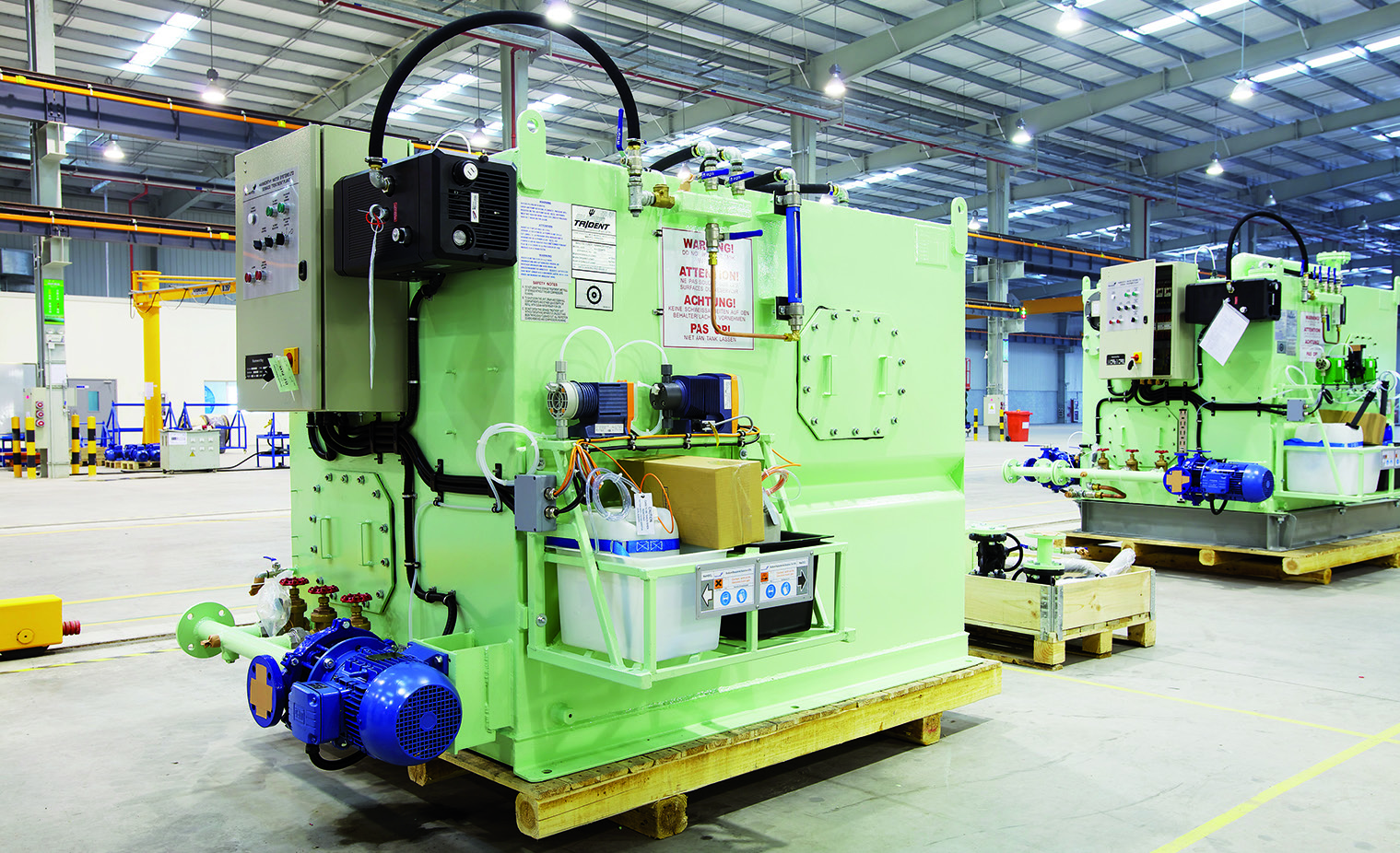

Sewage treatment, waste management
There are three main sewage treatment processes: biological, physico-chemical and electrocatalytic oxidation. See also Membrane BioReactor (MBR).
Physical-chemical treatment of sewage
Physical-chemical treatment of sewage is based on the separation of the liquid element from the sewage flow by bathing it in chlorine for thirty minutes to kill off coliform bacteria before discharging it overboard. Usually treatment units using this type of process are designed to hold only a fourteen-day accumulation of solids, then discharge to port sewage reception facilities or outside territorial waters.
Electrocatalytic oxidation
This type of treatment plant collects the sewage and directs it through a macerator which breaks it down into minute particles. Then, the sewage passes through an electrolytic cell where the oxidation process takes place. Next, the effluent flows under its own pressure to a settling tank for completion of oxidation process and direct discharge overboard. The discharge contains no solids and is totally free of coliform bacteria.
Further reading: Guidelines on implementation of effluent standards and
performance tests for sewage treatment plants Resolution MEPC 159 (55)
Wärtsilä Hamworthy is the world´s leading manufacturer of marine sewage treatment plant. For over three decades Super Trident sewage treatment plant have been widely regarded as standard specification on all vessels. Plant installed on existing ships on or after 1 January 2010 and on new ships whose keels are laid on or after this date must meet the new IMO MEPC 159(55) guidelines, which are more stringent than the longstanding IMO MEPC 2(VI) guidelines. The STA-C and ST-C series of Wärtsila Hamworthy plant is certified to meet IMO MEPC 159(55). An STA-C or ST-C unit is fully compatible with gravity and vacuum collection systems, and uses the activated sludge system, which accelerates natural biological processes. Chemical disinfection and dechlorination are employed to produce a clean, safe, effluent suitable for discharging at sea.
